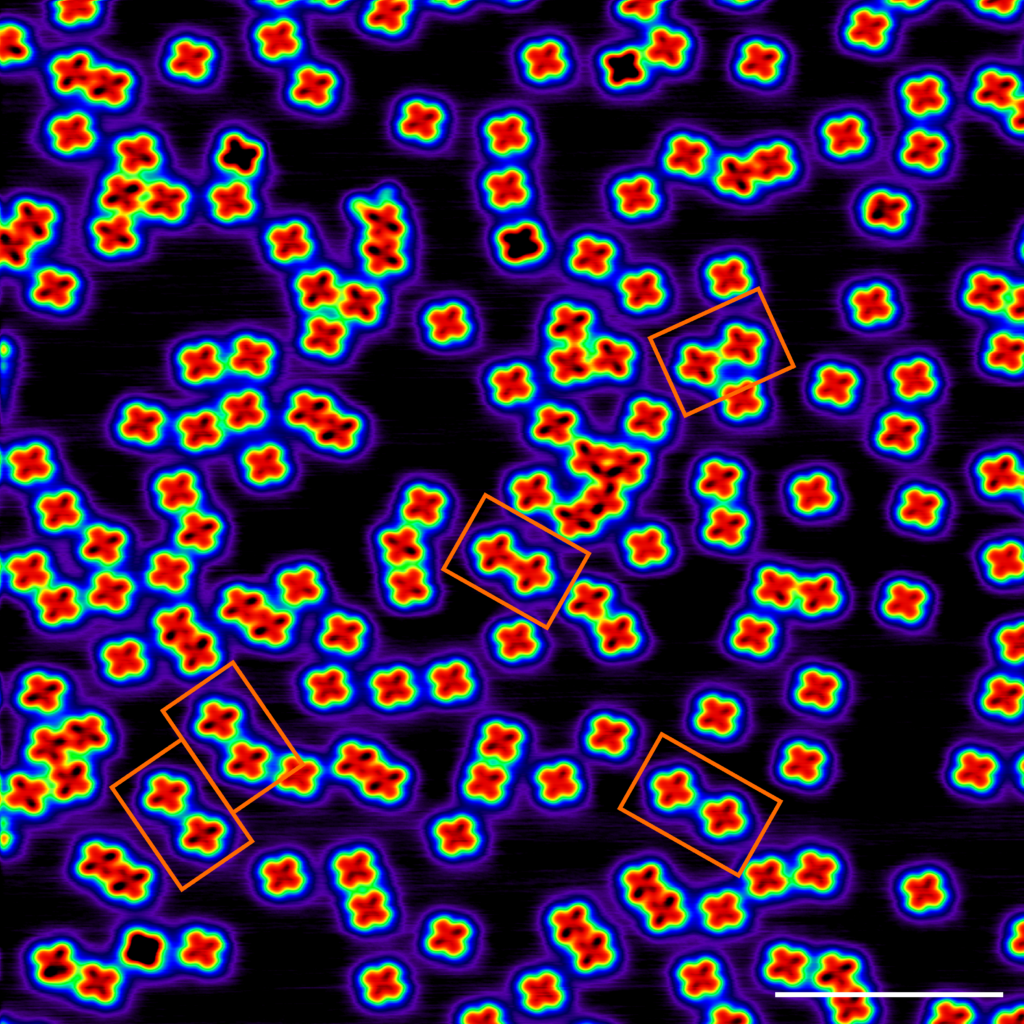
Marina Castelli studied the phthalocyanine containing magnesium (MgPc) via 5K scanned probe microscopies extensively during her PhD.
‘Routine’ STM characterisation showed that the molecules were interacting with one another on the Ag100 surface.
ncAFM showed identical contrast for all molecules, pointing to an electronic origin to the observed changes in appearance.
Our key observation was to track the shape of the occupied LUMO for different pairwise distances, an electronic feature that otherwise remained isoenergetic.
With multipass dI/dV mapping we were able to quantitatively track from four- to two-fold rotational symmetry, over distances out to ~3 nm. We found the spatial extent of this attractive hybridization quite surprising.
“Long-Range Surface-Assisted Molecule-Molecule Hybridization”, Small (2021). 10.1002/smll.202005974

